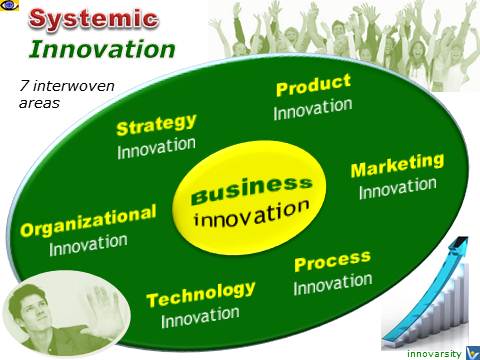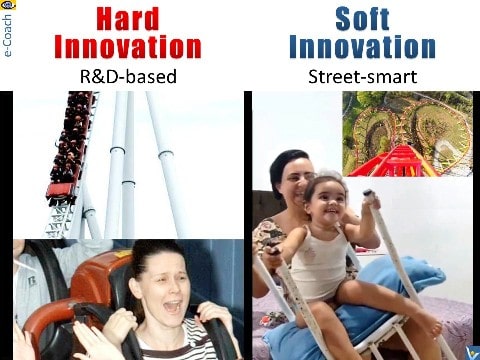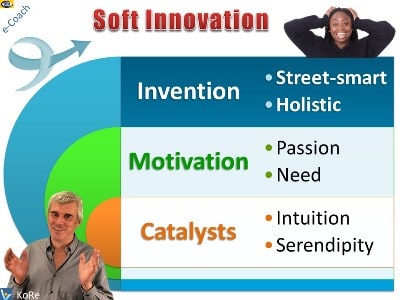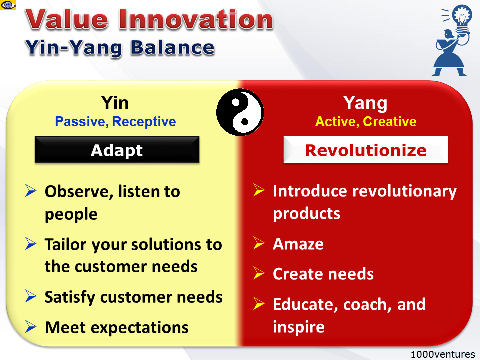| |
|
Soft Innovation
vs.
Hard Innovation
|
|
|
| |
|
Differences ▪ Value ▪
Synergy
|
|
|
| |
Hard Innovation is
organized R&D characterized by
strategic investment in
innovation.
Soft Innovation is the
clever, insightful, useful
product ideas that just anyone
in the organization can think
up. |
|
 |
| |
|
‘Soft’ innovation is at least as important as 'hard'
innovation.
Hard innovation without soft innovation
is rare,
soft innovation without hard innovation is
common.
|
|
|
| |
'Hard'
innovation is based on extensive
and expensive research and
development (R&D).
'Soft'
innovation is 'street-smart',
intuitive, serendipitous type of
value innovation.
|
|
 |
| |
|
Soft Innovation vs. Hard
Innovation
Example: Roller Coaster
|
|
|
 |
|
Soft innovation is inspired by creative challenges and a
combination of life experiences, social intelligence, awareness,
smartness, cleverness, observation, imagination,
innovative thinking,
inventiveness, intuition,
entrepreneurial serendipity, and ingenuity. |
|
 |
To
me, innovating is like breathing
– I just cannot stop innovating.
~
Vadim
Kotelnikov |
|
The driving force of
innovation
is
love.
By its nature
innovation is a science-flavored
art.
The process of innovation,
ideally, is
jazz − improvisation
within a guiding structure,
in
reality, it is a
football game.
|
|
The Value of Soft Innovation

The two forms of innovation − hard innovation and
soft innovation − are often implemented together.
'Hard' (R&D-based) innovation is more successful
when it is implemented in combination with 'soft'
innovation. Non-technological innovation contributes
to a stronger competitiveness.
Leading companies that create an environment where
employees are encouraged and rewarded for making
contributions of their street-smarts in order to
fuel the company's soft-innovation efforts keep
inventing amazing customer experiences.
|
|